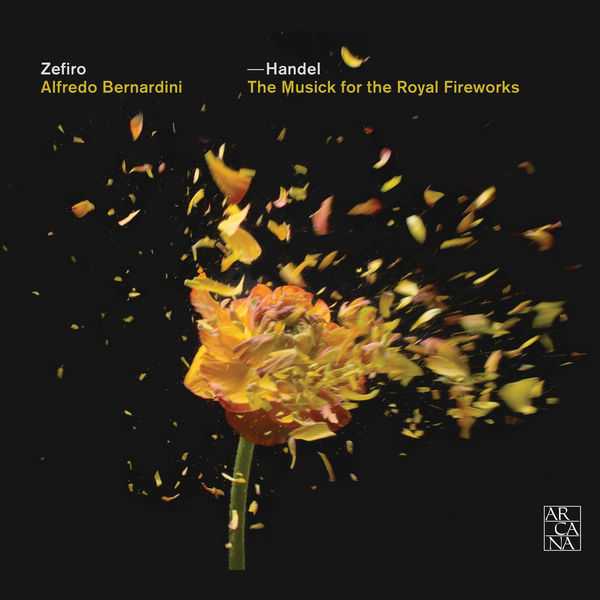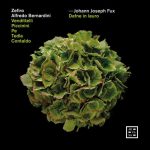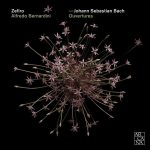
Composer: George Frideric Handel
Performer: Alfredo Bernardini, Zefiro
Format: FLAC (tracks)
Label: Arcana
Catalogue: A386
Release: 2015
Size: 338 MB
Recovery: +3%
Scan: yes
Musick for the Royal Fireworks, HWV 351
01. I. Ouverture
02. II. Bourrée
03. III. La paix
04. IV. La réjouissance
05. V. Menuet I & Menuet II
Concerto a due cori No. 3 in F major, HWV 334
06. I. Ouverture
07. II. Allegro
08. III. Allegro ma non troppo
09. IV. Adagio
10. V. Andante larghetto
11. VI. Allegro
Concerto a due Cori No. 1 in B-flat Major, HWV 332
12. I. Ouverture
13. II. Allegro ma non troppo
14. III. Allegro
15. IV. Largo
16. V. A tempo ordinario
17. VI. Alla breve moderato
18. VII. Minuet
Concerto a due Cori No. 2 in F Major, HWV 333
19. I. Pomposo
20. II. Allegro
21. III. A tempo giusto
22. IV. Largo
23. V. Allegro ma non troppo
24. VI. A tempo ordinario
Originally released in 2008, Zefiro’s account of the Musick for the Royal Fireworks is one of the Italian ensemble’s most successful recordings (among others, Diapason d’or of the Year 2009 and Gramophone Editor’s Choice) and remains a benchmark version for this celebrated spectacular masterwork.
Here it is again in their Arcana series, on the occasion of a new European tour with Handel’s Firework Music scheduled in June with performances in Grenoble, Versailles, Luxembourg and Halle.
Despite the use of period instruments, including some fine blaring natural horns, this couldn’t be called a historically informed performance of Handel’s Royal Fireworks Music, HWV 351. The work was not composed for a pleasant onboard afternoon musicale like the Water Music, but instead was part of an event that would have been one of the top items on CNN Headline News for 1749: the celebration of the Peace of Aix-la-Chapelle, brokered by King George II. After going to great lengths in the booklet to describe the back-and-forth between Handel, who scored the work for a mighty ensemble led by nine trumpets, and the king, who wanted more, the historical-instrument ensemble Zefiro and its leader Alfredo Bernardini give three, plus an agile group of four horns. This may simply be in keeping with the fashion for minimal groupings in early music, but Bernardini is also able to bring out subtle balances involving the strings (whose inclusion, it’s true, Handel also campaigned for vigorously) and the quieter oboes and bassoons. Another attraction is the sound, recorded in an Italian Jesuit college cloister. This is one of those locations that, if handled right, artfully simulates a full outdoor environment while largely avoiding the compromises inherent in such a setting. Finally there is the inclusion of the rarely recorded Concerti a due cori, three antiphonal pieces reworked from vocal numbers (a few of them very familiar). These were Handel’s last instrumental compositions, and they receive crisp, well-differentiated performances. This album was recorded in 2006 but, for reasons not specified, did not see the light of day until 2015. Recommended for Handel buffs.



